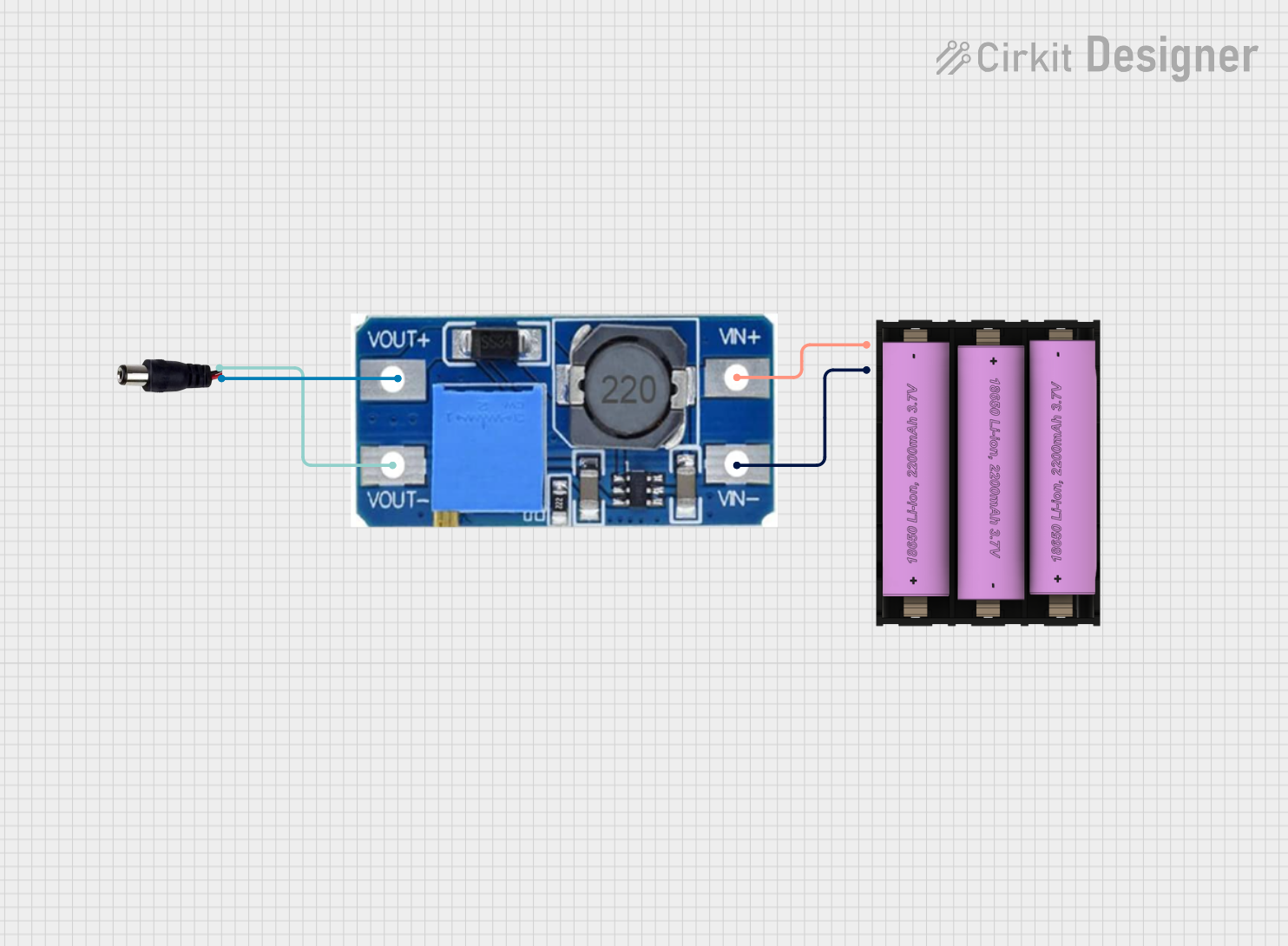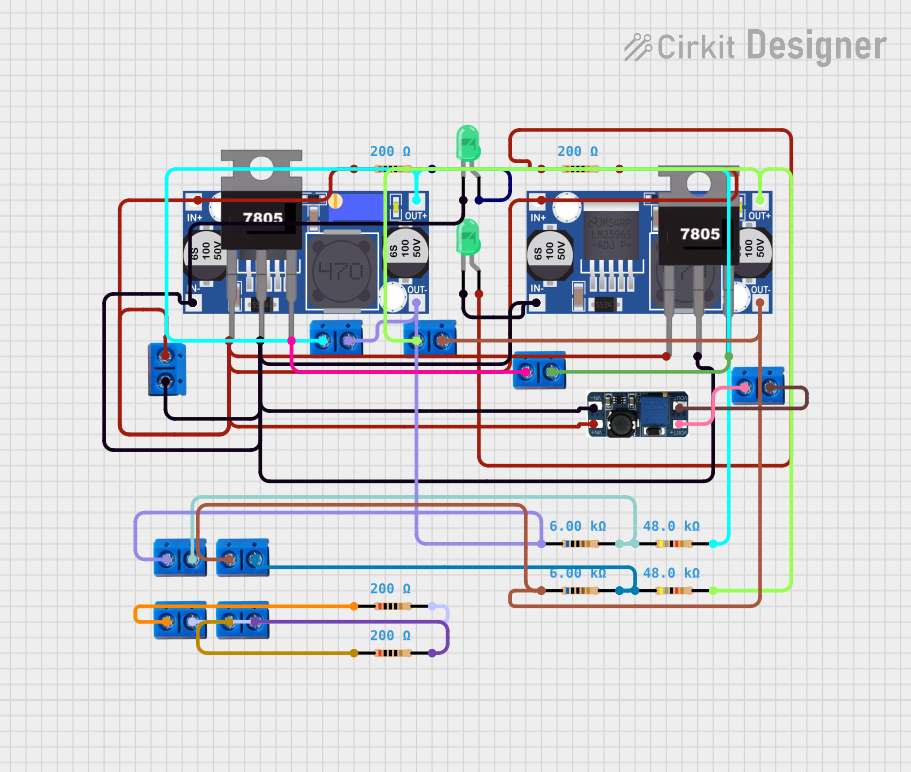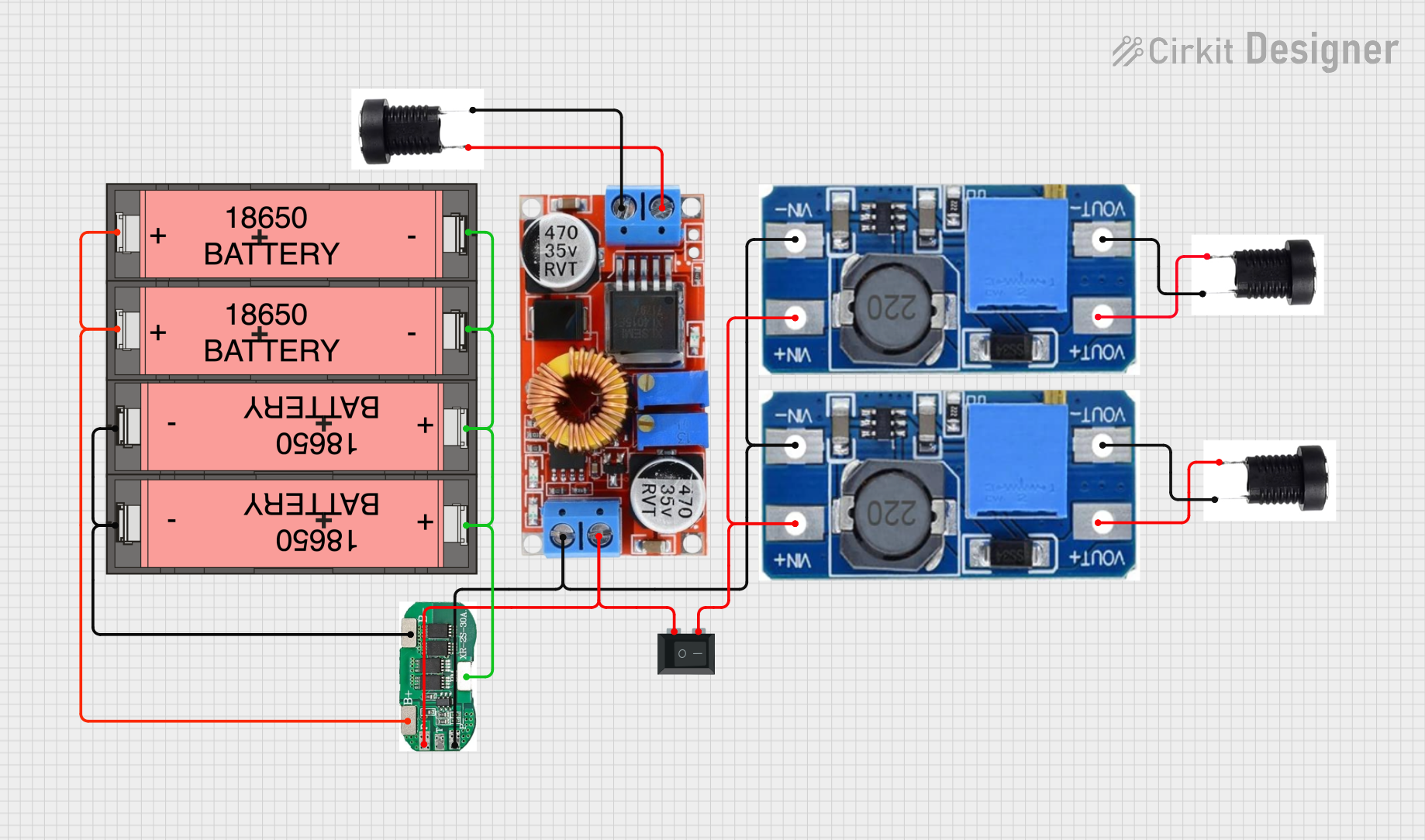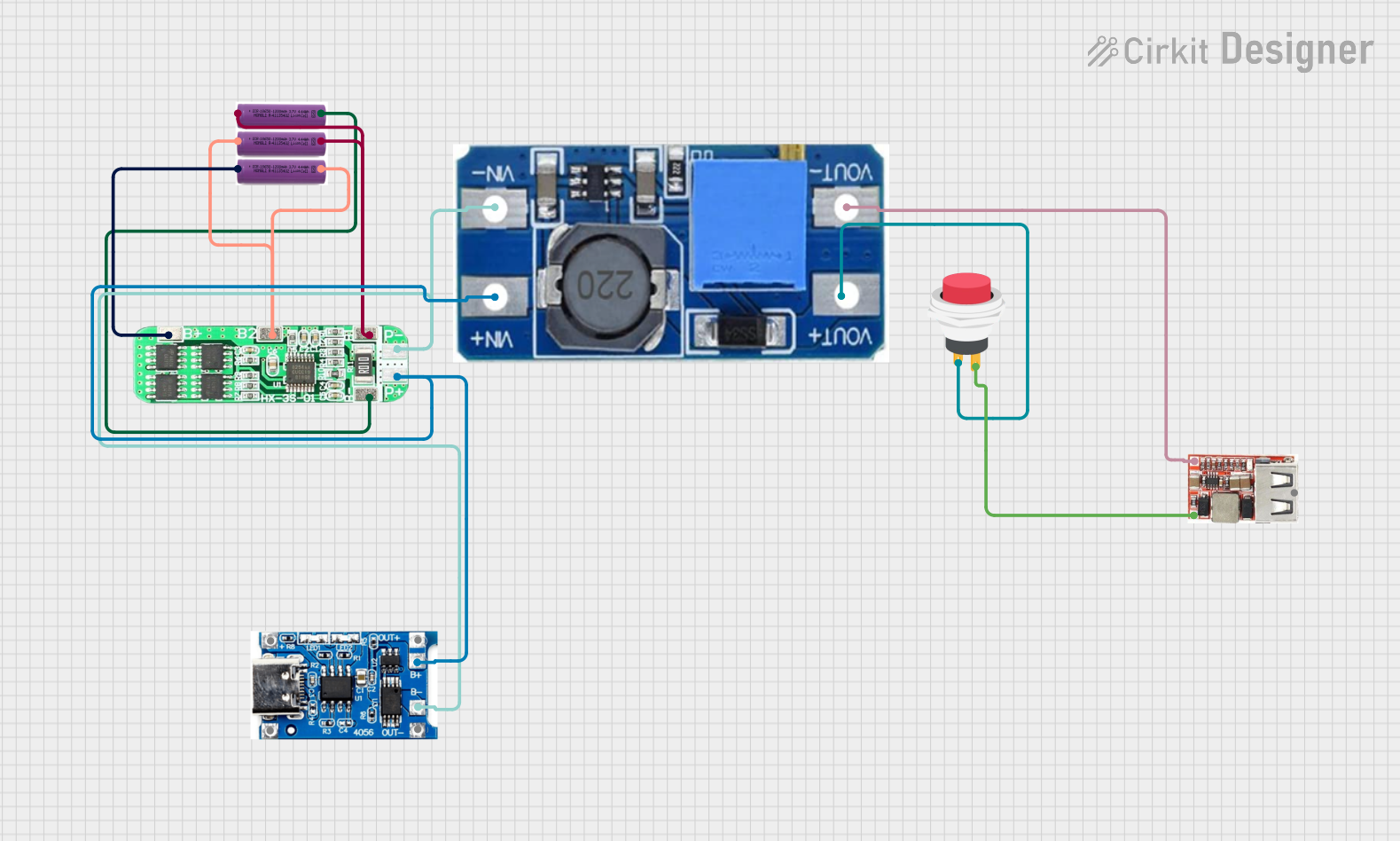
How to Use Step Up Boost Power Converter, Adjustable Voltage Regulator: Examples, Pinouts, and Specs
 Design with Step Up Boost Power Converter, Adjustable Voltage Regulator in Cirkit Designer
Design with Step Up Boost Power Converter, Adjustable Voltage Regulator in Cirkit DesignerIntroduction
The Step Up Boost Power Converter, also known as an Adjustable Voltage Regulator, is an electronic component that increases (steps up) the voltage from its input to its output while allowing control over the output voltage. This component is essential in applications where the supply voltage is lower than what is required by the load. Common applications include battery-powered devices, power supply design, and any circuit requiring a specific voltage level that is higher than the available source.
Explore Projects Built with Step Up Boost Power Converter, Adjustable Voltage Regulator

 Open Project in Cirkit Designer
Open Project in Cirkit Designer
 Open Project in Cirkit Designer
Open Project in Cirkit Designer
 Open Project in Cirkit Designer
Open Project in Cirkit Designer
 Open Project in Cirkit Designer
Open Project in Cirkit DesignerExplore Projects Built with Step Up Boost Power Converter, Adjustable Voltage Regulator

 Open Project in Cirkit Designer
Open Project in Cirkit Designer
 Open Project in Cirkit Designer
Open Project in Cirkit Designer
 Open Project in Cirkit Designer
Open Project in Cirkit Designer
 Open Project in Cirkit Designer
Open Project in Cirkit DesignerTechnical Specifications
Key Technical Details
- Input Voltage Range: Typically 2V to 24V
- Output Voltage Range: Adjustable, often up to 28V or more
- Maximum Output Current: Depending on the model, can range from 2A to 10A (with proper heat sinking)
- Efficiency: Up to 93% (varies with load and input/output voltage difference)
- Switching Frequency: Typically around 150kHz to 400kHz
- Operating Temperature: -40°C to +85°C (check specific model ratings)
Pin Configuration and Descriptions
| Pin Number | Name | Description |
|---|---|---|
| 1 | VIN | Input voltage to the converter. Connect to the positive terminal of your power source. |
| 2 | GND | Ground pin. Connect to the negative terminal of your power source and the common ground in your circuit. |
| 3 | VOUT | Output voltage from the converter. This is the regulated, stepped-up voltage. |
| 4 | ADJ | Adjustment pin. Connect to a variable resistor or fixed resistor network to set the output voltage. |
Usage Instructions
How to Use the Component in a Circuit
- Connecting Power: Connect the power source to the VIN and GND pins, ensuring that the source voltage is within the specified input range for the converter.
- Setting Output Voltage: Connect a potentiometer or a fixed resistor divider to the ADJ pin to set the desired output voltage. The output voltage is typically set using the formula provided in the datasheet, which relates the resistances to the output voltage.
- Load Connection: Connect the load to the VOUT and GND pins. Ensure that the load does not exceed the maximum current rating of the converter.
- Heat Management: If the converter is expected to handle high power, attach an appropriate heat sink to the converter to prevent overheating.
Important Considerations and Best Practices
- Capacitor Usage: It is recommended to use input and output capacitors to minimize voltage ripple and improve stability.
- Inductor Selection: If the converter is of the type that requires an external inductor, choose an inductor that can handle the peak current without saturation.
- Thermal Considerations: Always consider the thermal limits of the device. Exceeding the temperature rating can lead to failure.
- Short-Circuit Protection: Ensure that the converter has built-in short-circuit protection or add an external fuse to prevent damage.
Troubleshooting and FAQs
Common Issues
- Output Voltage Not Adjusting: Check the connections to the ADJ pin and ensure the potentiometer or resistor network is functioning correctly.
- Overheating: Ensure adequate heat sinking and airflow. Check if the load is drawing more current than the converter's maximum rating.
- Output Voltage Ripple: Increase the value of the output capacitor or use a capacitor with a lower equivalent series resistance (ESR).
Solutions and Tips for Troubleshooting
- No Output Voltage: Verify input voltage is present and within the specified range. Check for proper soldering and component connections.
- Inconsistent Output Voltage: Ensure that the ADJ pin is not picking up noise. Use a stable reference voltage if necessary.
- Device Shuts Down Under Load: This could be due to thermal overload or overcurrent protection. Reduce the load or improve cooling.
Example Arduino UNO Connection and Code
// Example code to control a Step Up Boost Power Converter with an Arduino UNO
const int adjPin = 3; // Connect to the ADJ pin of the converter through a digital potentiometer
void setup() {
pinMode(adjPin, OUTPUT);
// Initialize serial communication for debugging
Serial.begin(9600);
}
void loop() {
// Set the output voltage to a mid-range value
analogWrite(adjPin, 128); // Adjust this value to change the output voltage
Serial.println("Output voltage set to mid-range");
delay(5000); // Wait for 5 seconds
// Adjust the output voltage to a different value
analogWrite(adjPin, 64); // Adjust this value to change the output voltage
Serial.println("Output voltage set to a lower value");
delay(5000); // Wait for 5 seconds
}
Note: The above code assumes the use of a digital potentiometer connected to the ADJ pin for voltage adjustment. The actual implementation may vary based on the specific hardware used and the desired control method.
Remember: Always refer to the specific datasheet of the Step Up Boost Power Converter model you are using for precise information on pin assignments, voltage settings, and other critical parameters.